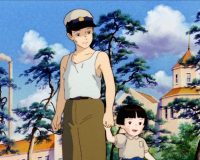The youth counterculture movement of the 1980s and 1990s in the Harajuku district of Tokyo was a significant turning point in the area’s cultural landscape and helped establish it as a hub for creativity, self-expression, and alternative culture. This movement was driven by young people who were seeking an alternative to the traditional Japanese culture and values of the time, and saw the emergence of a vibrant and eclectic street fashion scene.
The youth counterculture movement in Harajuku was characterized by a rejection of traditional societal norms and a focus on individuality and creativity. Young people in the area experimented with different fashion styles, incorporating elements of punk, goth, and other alternative subcultures into their looks. This was a response to the strict societal norms that existed in Japan at the time, and allowed young people to express their individuality and creativity in a way that was not possible within the traditional Japanese culture.

One of the key features of the youth counterculture movement in Harajuku was the development of the street fashion scene. This saw young people experimenting with different styles and looks, creating a unique fashion culture that reflected their individuality and creativity. From the classic Harajuku Lolita look to the more avant-garde and eclectic street fashion, the youth counterculture movement in Harajuku produced a range of fashion styles that continue to influence the fashion world to this day.

In addition to the street fashion scene, the youth counterculture movement in Harajuku was also characterized by its embrace of alternative subcultures and events. Punk rock, goth, and other alternative subcultures were popular among young people in the area, and regular gatherings and events provided a platform for young people to express their individuality and creativity.

The youth counterculture movement in Harajuku was also influenced by the anime and manga culture that was emerging in Japan at the time. Fans of these popular forms of entertainment gathered in the area to socialize, trade merchandise, and show off their latest cosplay outfits. This further cemented Harajuku’s reputation as a center for creativity and self-expression, and helped establish it as a hub for the emerging anime and manga culture in Japan.

Despite its significance in the cultural landscape of Harajuku, the youth counterculture movement of the 1980s and 1990s was not without its challenges. The movement was met with resistance from the traditional Japanese culture, with many seeing the alternative fashion and subcultures as a threat to the country’s traditional values. However, despite this resistance, the youth counterculture movement in Harajuku continued to thrive, and its impact on the area’s cultural landscape remains to this day.

In conclusion, the youth counterculture movement of the 1980s and 1990s in the Harajuku district of Tokyo was a significant turning point in the area’s cultural landscape and helped establish it as a hub for creativity, self-expression, and alternative culture. The movement’s embrace of alternative fashion and subcultures, its focus on individuality and creativity, and its influence on the anime and manga culture in Japan all helped to shape Harajuku into the unique and vibrant district that it is today. Whether you’re a fan of alternative culture, street fashion, or simply looking for a unique and immersive experience, Harajuku is a must-visit destination that continues to reflect the spirit and energy of the youth counterculture movement of the 1980s and 1990s.













